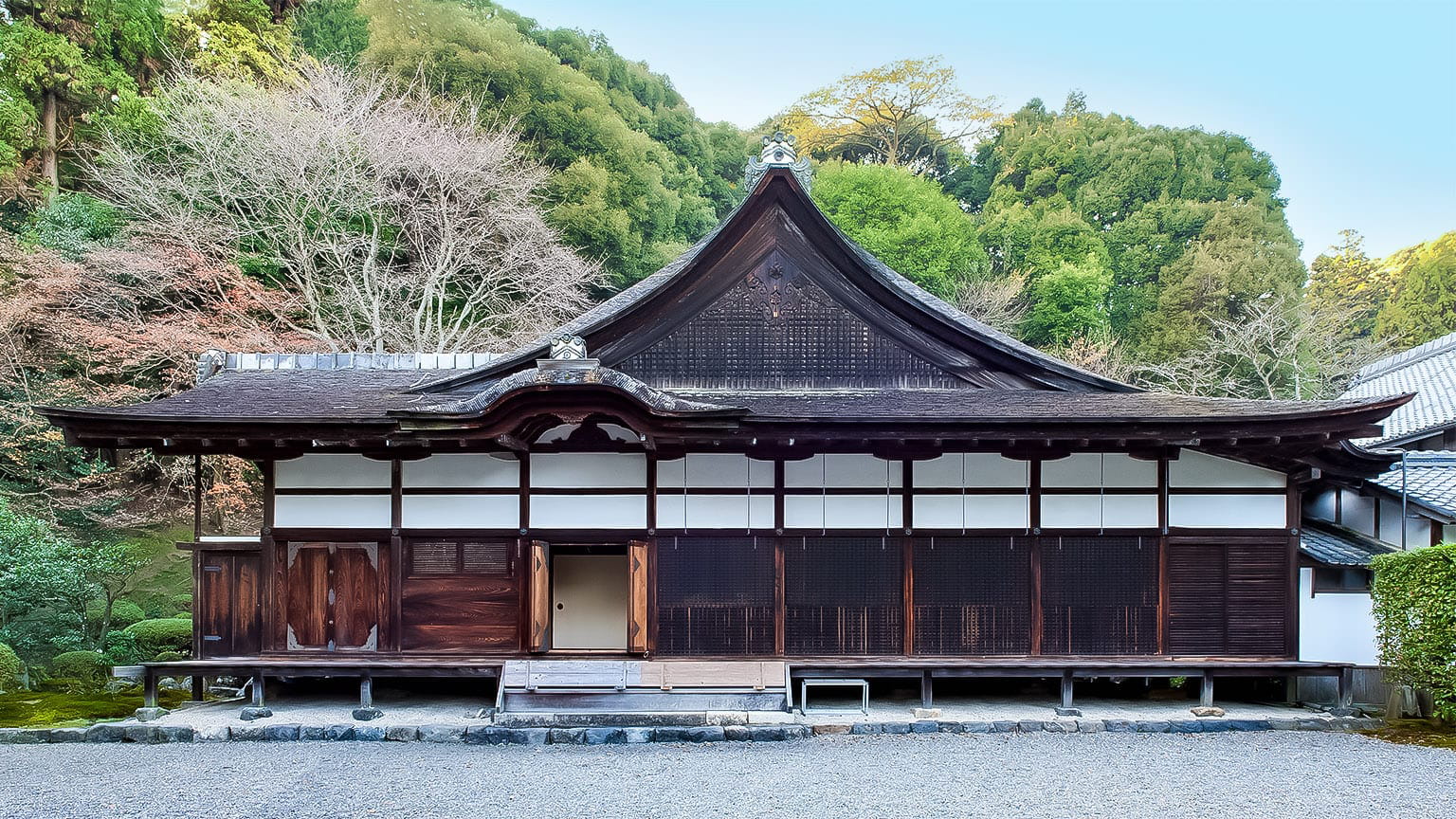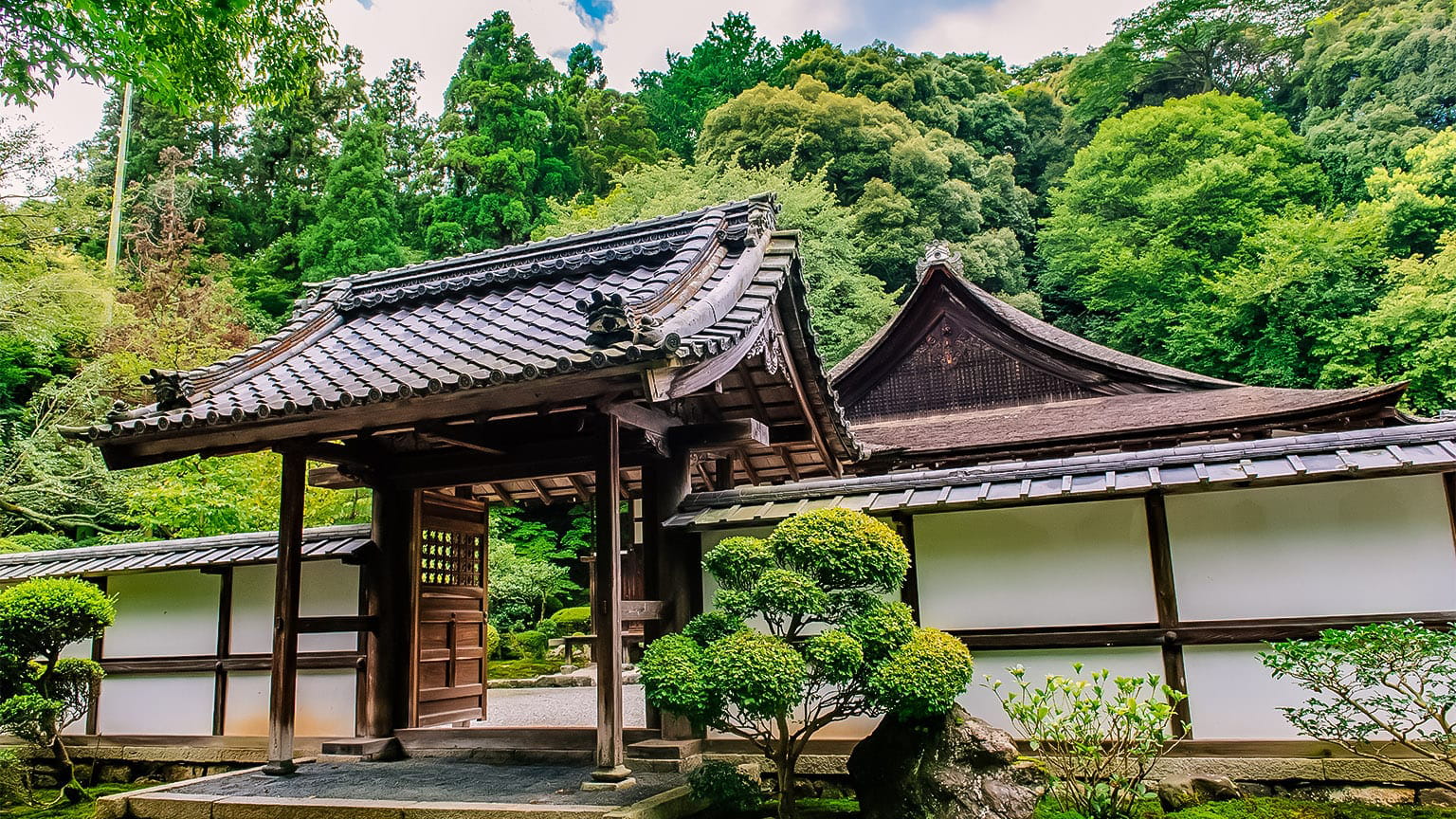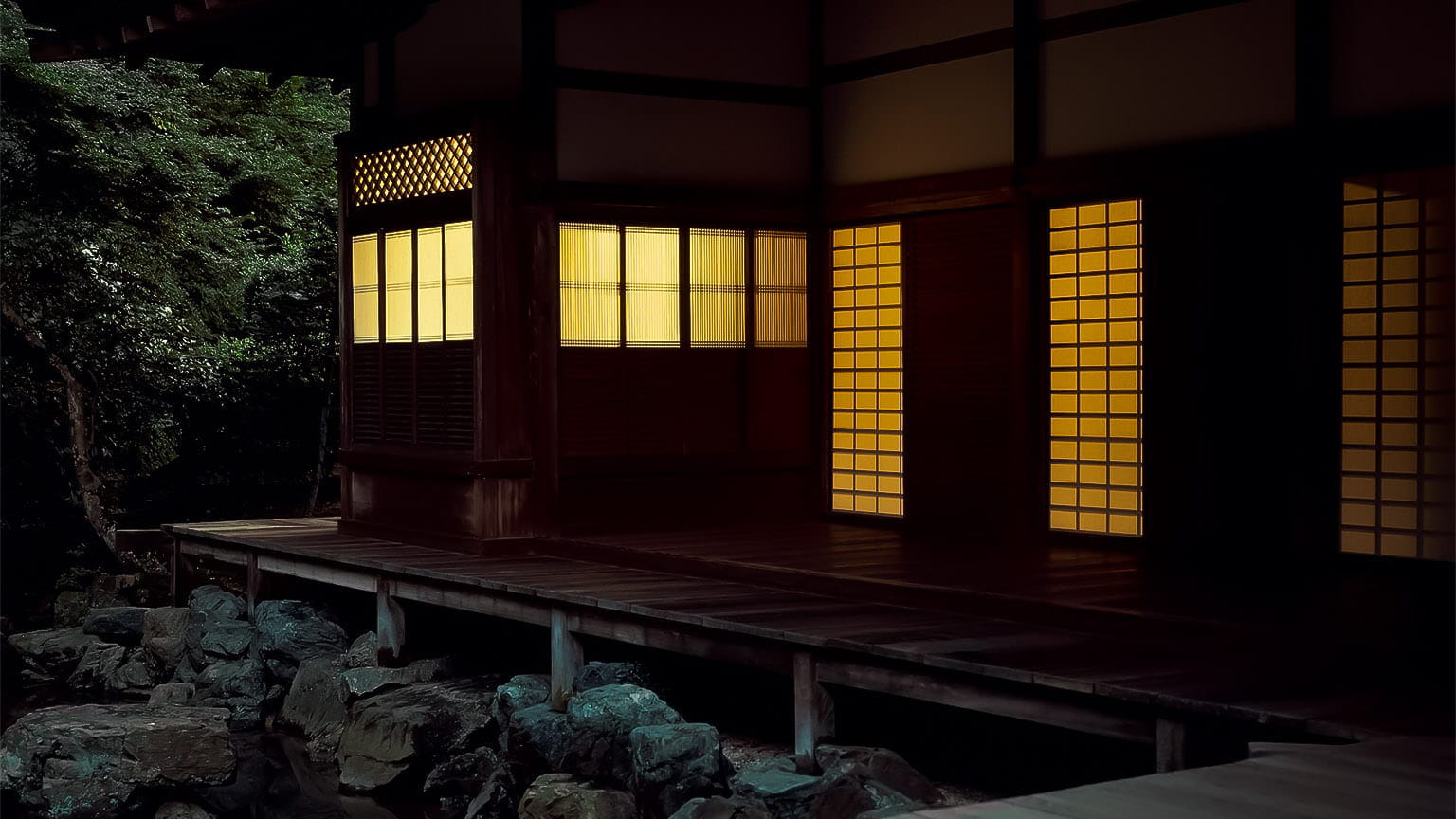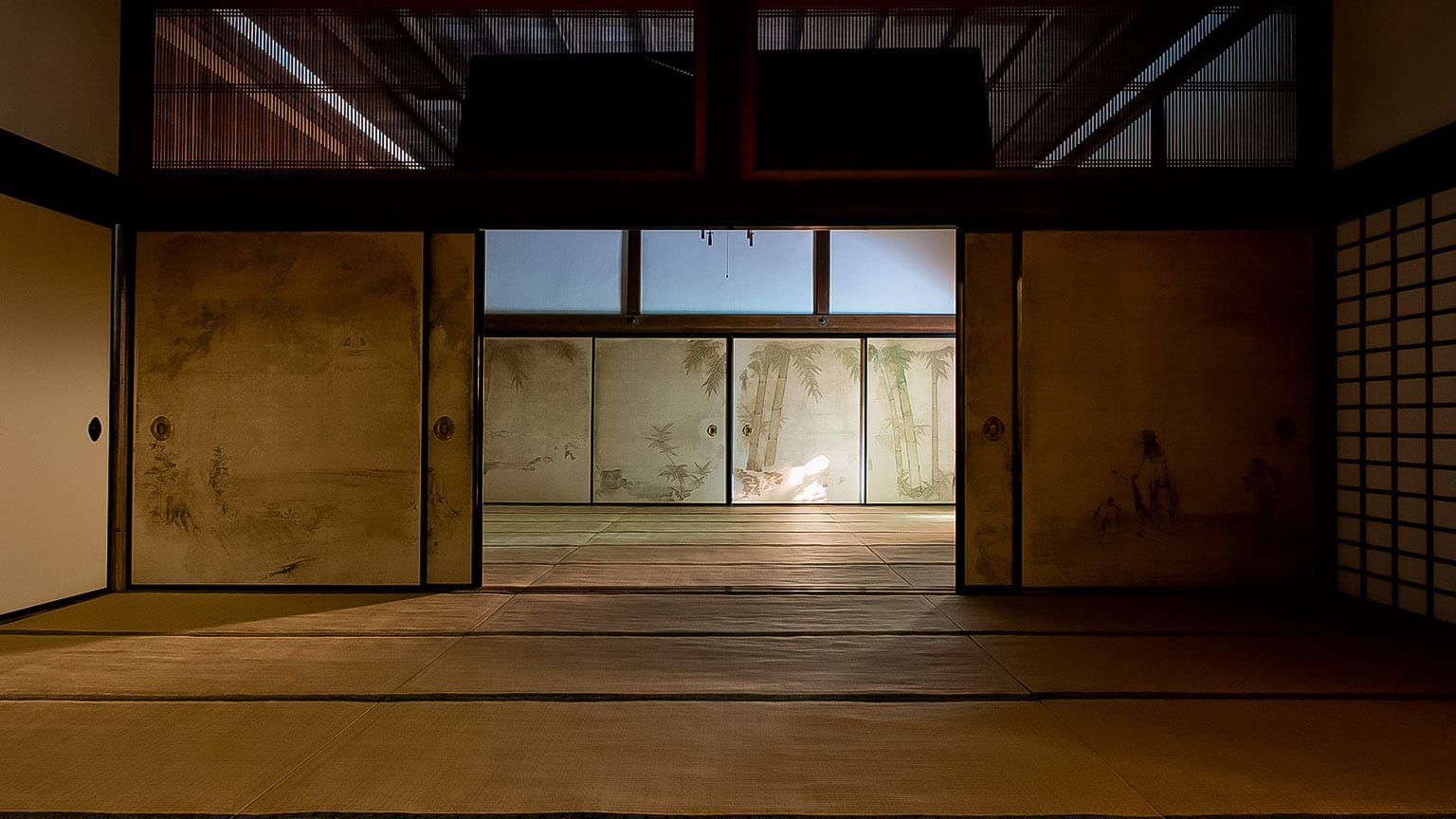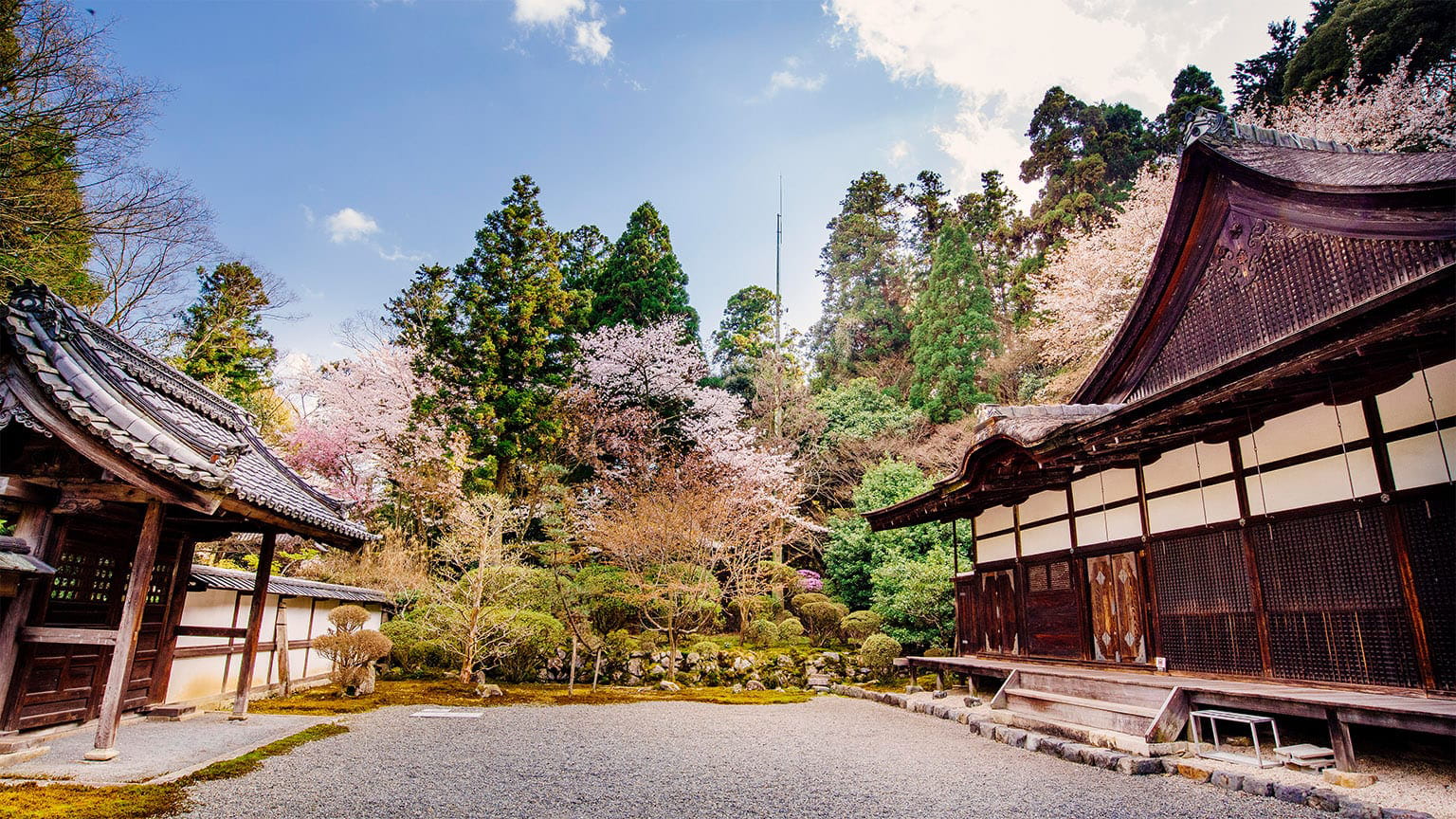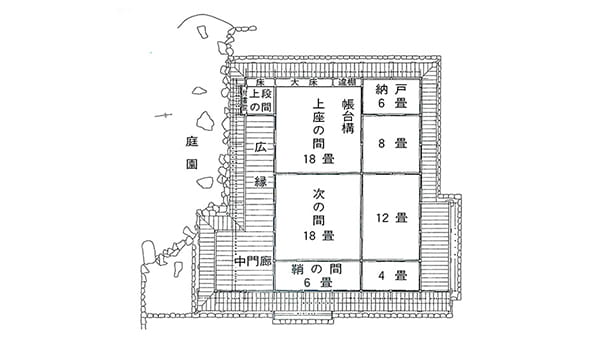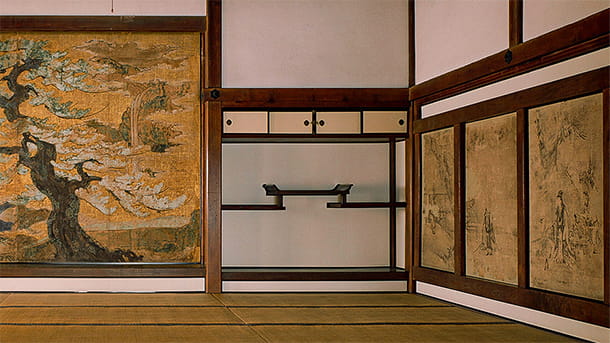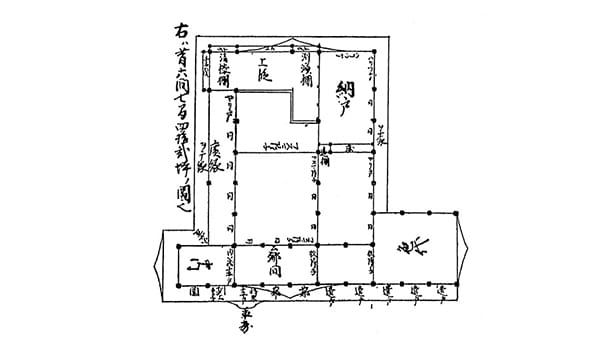“shoin-zukuri”
Shinden-zukuri style was created in aristocratic society in the Heian period developed in accordance with the transition of society. From the Kamakura period onward, its architectural style was adapted to the life of samurai warriors who took the real power, and it was particularly modified for the necessity of having guests and ceremonies. It was also influenced by the architectural style of Zen Buddhism from China, and its unique style was gradually adopted for residential houses for military families as shoin-zukuri.
“Yamaoka Doami Kagetomo”
Yamaoka Doami Kagetomo (1540–1603) was a warlord between the Sengoku period (the Warring States period) and the Azuchi-Momoyama period. He was born as the fourth son of Yamaoka Kageyuki, a Mimasaka-no-kami (an official in Mimasaka) and the lord of Seta Castle in Omi Province (present-day Seta in Otsu City). First he became a priest of Kojo-in Temple in Miidera Temple founded by Sukehiro, an ancestor of the Yamaoka family, and was called Senkei. Later he served Ashikaga Yoshiaki and Oda Nobunaga. He also closely served Toyotomi Hideyoshi as Otogi-shu (storyteller) and was called Doami. After the Battle of Sekigahara in 1601, he was awarded land worth 9,000 koku (ancient rice production unit) and took charge of the Koga Hundred-Member Gun Squad. In 1603, he became the first feudal lord of the Futto domain in Hitachi County (present-day Futto, Inashiki City in Ibaraki Prefecture) worth 10,000 koku.
“Tokugawa (Edo) Shogunate”
The shogunate that was founded by Tokugawa Ieyasu in Edo (present-day Tokyo) in 1603. It lasted 265 years, with 15 shoguns, until the restoration of imperial rule by Tokugawa Yoshinobu in 1867. The position of tairo (great elder), roju (senior members of shogunate) and wakadoshiyori (next in status below the roju) were appointed as the government administration (the position of tairo was irregular). The san-bugyo (three administrators) including the jisha-, machi- and kanjo-bugyo were assigned to deal with lawsuits and administration of temples, shrines and territories. Other than those, ometsuke and metsuke were assigned to monitor government affairs.
“Heinouchi Masanobu”
Heinouchi Masanobu (1583–1645) was a master carpenter in the early Edo period. He came from Naga County in Kii Province (present-day Wakayama Prefecture) and was involved with the construction work for the Toyotomi family and Tokugawa family with his father Yoshimasa. In 1632, the Edo Shogunate appointed him as a master carpenter responsible for architecture and construction matters, who was the head of the Shitennoji school, an artisans’ group, that passed down their skill in constructing temple and shrine buildings in the Japanese style. He is also known as the author of the architectural design book, Shomei, in which the secrets of architectural techniques are shown.
“architectural design book Shomei”
The book in which the secrets regarding architectural techniques were written in 1608 by Heinouchi Masanobu, a master carpenter of the Edo Shogunate. This type of architectural design book is called kiwari-sho, and his manual book Shomei represents kiwari-sho.
“Muromachi-period”
The period when the Ashikaga clan took power and founded the shogunate in Muromachi, Kyoto. It refers to approximately 180 years from 1392 when the Northern Imperial Court and Southern Imperial Court united until 1573 when Yoshiaki, the 15th Shogun was defeated by Oda Nobunaga. The late Muromachi period that came after the Coup of Meio is also called the Sengoku (Warring States) period. Some theories include the Northern and Southern Courts period (1336–1392) with the early Muromachi period.
“Ashikaga Yoshimasa’s mountain home (Higashiyamadono)”
Ashikaga Yoshimasa’s villa. Currently Ginkakuji Temple.
“mukashi rokken shichiken no shuden no zu”


